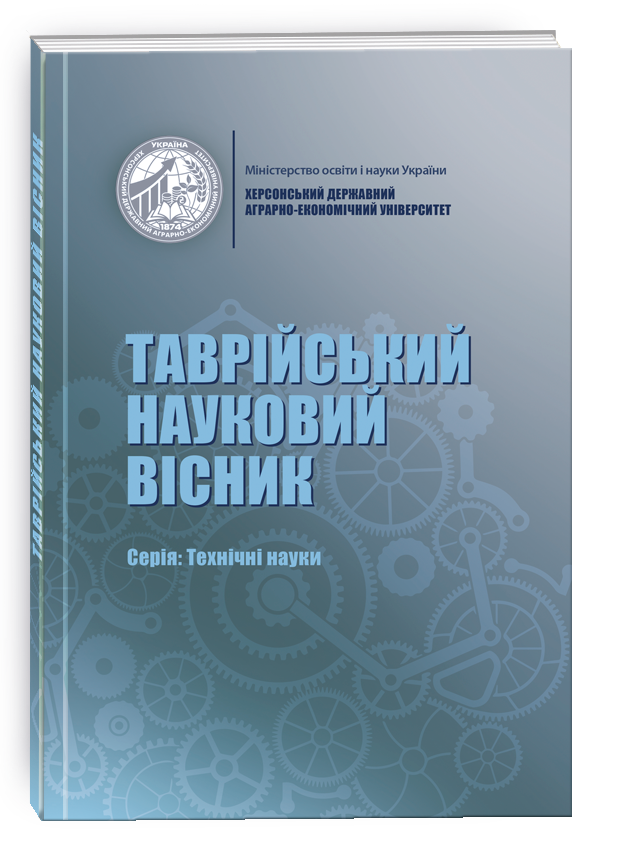THE FEATURES OF MEAT SNACKS PRODUCTION TECHNOLOGY
DOI:
https://doi.org/10.32782/tnv-tech.2024.3.14Keywords:
turkey, pork, chicken, beef, meat snacks, jerkyAbstract
Meat is a good source of animal protein and fat, micro- and macroelements. Meat snacks are quite convenient: they do not take up much space, have a long shelf life, and a high content of nutrients. In the conditions of the war in Ukraine, the production of meat snacks acquires special importance. Due to power outages, shelling and other consequences of hostilities, Ukrainians often face difficulties when preparing food. In addition, meat snacks play an important role in ensuring the diet of the Ukrainian military. Therefore, the production of such products by domestic manufacturers is absolutely necessary in the current situation. The purpose of the research is to develop the recipe and technology of meat snacks, namely jerky. 4 samples of jerky were made according to the same recipe, using the same drying modes, but on the basis of different meat raw materials – turkey (sample No. 1), pork (sample No. 2), chicken (sample No. 3) and beef (sample No. 4). During the production of meat jerky, the mass loss was almost half. Sample No. 2 lost the most weight – 62.5%. All pieces of the obtained jerky kept their shape well after drying, kept their characteristic meat color, the taste and smell were pleasant, corresponded to the raw materials used, without extraneous tastes and smells. During the tasting, all samples received sufficiently high points. Sample No. 1 (turkey jerky) had the fewest points. The highest scores among the samples were obtained by No. 2 (pork jerky) and No. 4 (beef jerky), in which the composition, nutritional and energy value were further determined. The content of protein and fiber was dominated by beef jerky – by 0.45% and 0.17%, respectively, and by the content of fat and ash, pork jerky prevailed – by 3.52% and by 0.06% respectively. It should be noted the high protein content in the finished product – 82.55% (pork jerky) and 83.0% (beef jerky). The sample of beef jerky significantly exceeded pork jerky in terms of iron (97432.6 mg/kg) and zinc (128.02 mg/kg). The studied samples of jerky were significantly superior to the production samples in terms of protein content and energy value, and also had a lower content of fat and carbohydrates. It was decided to implement researched samples of meat jerky No. 2 (pork) and No. 4 (beef). Regarding further research in this area, it will be promising to determine the amino acid composition, rational drying regimes, storage period and packaging conditions of the finished product.
References
Meat. Food and Agriculture Organization Term Porta: веб-сайт. URL: https://www.fao.org/markets-and-trade/commodities/meat/en/?ADMCMD_view=1 (дата звернення 13.04.2024).
What is meat? National Heart, Lung, and Blood Institute: веб-сайт. URL: https://www.nhlbi.nih.gov/health/educational/wecan/eat-right/distortion.htm (дата звернення 13.04.2024).
FoodData Central. U.S. Department of Agriculture, Agricultural Research Service: веб-сайт. URL: https://fdc.nal.usda.gov/ (дата звернення 13.04.2024).
Dietary Guidelines. U.S. Department of Agriculture, Agricultural Research Service: веб-сайт. URL: https://www.dietaryguidelines.gov/resources/2020-2025-dietary-guidelines-online-materials (дата звернення 13.04.2024).
Загальні технології харчової промисловості. Частина 1: навчальний посібник / В.Ф. Перцевой та ін. Суми: СНАУ, 2021. 317 с.
Спосіб виробництва снеків м'ясних: Пат. 66027 Україна: МПК A23L, 1/31. №u 2011 05539; заяв. 29.04.2011; опубл. 10.11.2011, Бюл. №24.
Zdanowska-Sąsiadek Ż., Marchewka J., Olav Horbańczuk Ja., Wierzbicka A. et al. Nutrients Composition in Fit Snacks Made from Ostrich, Beef and Chicken Dried Meat. Molecules. 2018. 23 (6). 1267.
Serra A., Gallart-Palau X., Koh W.Y., Chua Z.Ji.Yu. et al. Prooxidant modifications in the cryptome of beef jerky, the deleterious post-digestion composition of processed meat snacks. Food Research International. 2019. Vol. 125. 108569.
Jamadar D., Shree V., Wagh R. A review on meat-based snack industry. J. Exp. Zool. India. 2022. Vol. 25, No. 1. pp. 325–329.
Nimitkeatkai H., Pasada K., Jarerat A. Incorporation of Tapioca Starch and Wheat Flour on Physicochemical Properties and Sensory Attributes of Meat-Based Snacks from Beef Scraps. Foods. 2022. 11 (7). 1034.
Антонів А.Д. Жирнокислотний склад м’ясних снеків з додаванням продуктів бджільництва. Здоров’я людини і нації. 2024. №2. С. 7–15.
Паламарчук І.П., Муштрук М.М., Штонда О.А. Оцінка якості та харчової цінності м’ясних снеків. Здоров’я людини і нації. 2024. №2. С. 36–43.
Lima Í.A., do Carmo L.R., Andrade B.F., de Oliveira Th.L.C. et al. Technological and sensory characteristics in development of innovative symbiotic boneless drycured lamb meat snack. Meat Science. 2024. Vol. 216. 109578.
М'ясні снеки: джерки. Академія сушіння «DRY FOOD»: веб-сайт. URL: https://dryfoodacademy.com/blog/pro-susheni-produkty/shho-take-dzherky/ (дата звернення 13.04.2024).
Молоканов Л.В., Орешина О.О. Хімічний склад вітчизняних м’ясних снеків. Науковий вісник Полтавського університету економіки і торгівлі. 2011. №1 (52). С. 119–124.







